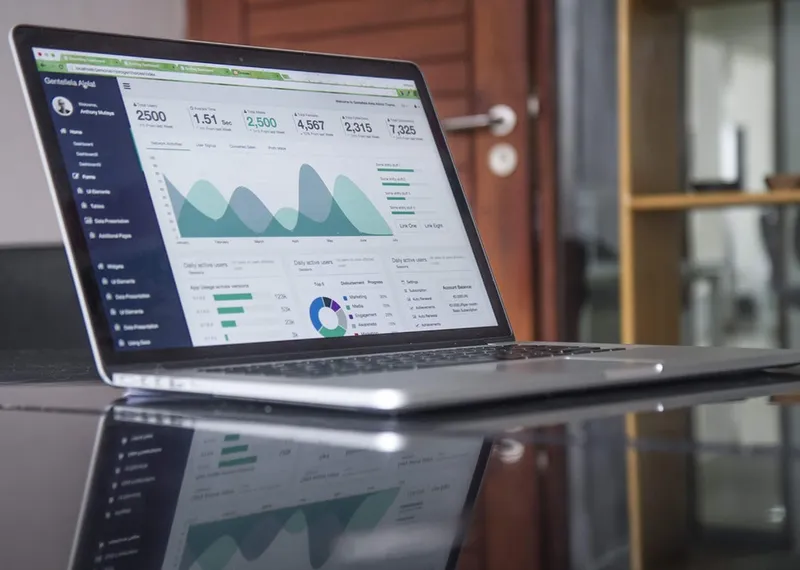

Data-Driven Web Design: How To Convert Your Website Into A Revenue-Generating Machine?
It’s time to take off rose-tinted glasses and look straight into the eyes of cold data. In this article, we’ll uncover the best web design practices backed on data analytics to convert your website into a revenue-generating machine.

Many websites are designed in the hopes that visitors will complete an action. To think that a website designed purely on aesthetics will “hopefully” convert sales is a quite tricky approach.
Aesthetics are important. But if you do not approach web design with data to back up your design instincts, you’re missing out on potential. Web design loves data.
It’s time to take off rose-tinted glasses and look straight into the eyes of cold data. In this article, we’ll uncover the best web design practices to convert your website into a revenue-generating machine.
The problem isn’t the data, it’s how you use the data
Designers often face a situation when a client doesn’t want to create a web design from scratch, but to improve the existing one. Then you should be daring enough to suggest the drastic changes that would make this business competitive on the web again.
However, you must know sometimes it’s difficult to convince a client to take radical actions. Business owners have good analytical thinking and need strong arguments for doing any changes. Thus, your design hypothesis backed with data would rather persuade them than anything else.
Imagine, you need to redesign the checkout process on the e-Commerce website. The first thing you might apply is user testing. It helps identify the problems users face when going through a checkout flow. The website analytics is your good old friend here. It can show how many web visitors abandon their carts after seeing the shipping rates, for instance. This data gives you also access to information on how current consumers behave during shopping and helps understand the up-sell opportunities.
Being armed with both quantitative and qualitative data on the website functioning, you can take the right design decision. When your design ideas are backed with data it becomes much easier to continue a conversation with the decision-maker on the above-mentioned drastic website improvements.

How can web design benefit from Google Analytics data?
Google Analytics gives you access to tonnes of data that can impact your decisions when creating the website architecture. You can investigate the internal search queries to define which pages users are looking for on your website. You might not have FAQ page or a specific page with the information users are often searching for. By simply adding this to your web architecture you can significantly improve user experience.
Imagine, people are constantly trying to go to a certain web page. Why not make a button linking to this page easily accessible on a home page? Investigating internal search queries opens up the opportunity to build much easier website navigation and, possibly, make a conversion rate much higher.
Form and call data constitutes a huge source of content ideas
Another prime tool for improving your website UX is reviewing form data and phone calls. It gives you even more information on how people behave on your website. Do they, maybe, ask questions that can be easily answered if you add a new block of content on your website?
You might be surprised but researching submitted forms you can enrich your website with the new key phrase variations and come up with the fresh ideas on web design style, sizes, shapes, etc.
Let your prospective customer’s queries be heard and see how a new source of information on content and design ideas opens right before your eyes.
Analytics shows if people love your content

Actually, there are a lot of ways to measure the “love” of your website visitors. You can conduct a content audit by looking at the heatmaps and analytics performance. It helps define which texts, photos, or other visuals are more loved by the website visitors and drive more conversions for the business. Traffic helps understand which website elements work better and are the most visible. Lots of moving elements might bog down the pages, providing negative user experience.
How to define if your content is really relevant for visitors?
It’s even better if you can use traction to measure and optimize your content. Do you know what does traction mean? It’s the users’ reaction to the content: are they responding to it, sharing, or are performing your preferred course of actions? Finally, are they converting? An example of “traction”, would be how Medium structures its metrics – where they prioritize “reads” and a read-ratio, and “recommends”, alongside page views.
Conclusion
The data-driven design doesn’t stop there. Data analytics helps designers combat their assumptions and allows them to move beyond standard design practices. Every industry, vertical, and business is unique, thus, every website needs a specific approach based on the insights from a web user experience.
When you follow design rules and guidelines to the letter, or just follow the latest digital design trends, it leads to a cookie-cutter website that doesn’t resonate with your users. The only way is to investigate each piece of your online presence puzzle to create a truly data-driven design that will bring success to your business.



